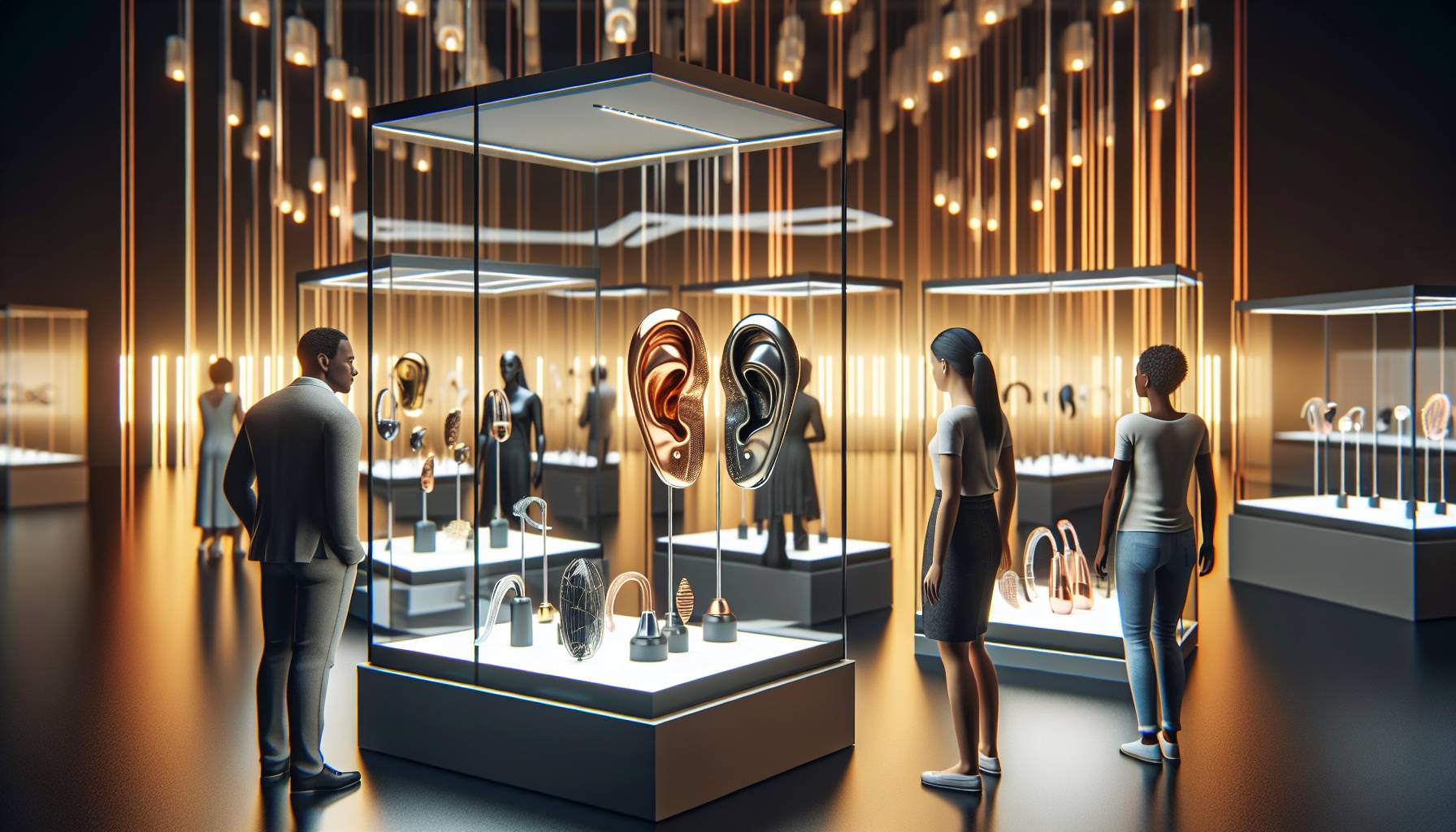creative stagnation in luxury fashion
The luxury fashion industry, long revered for its innovation and trendsetting, is facing a period of creative stagnation. Many of the biggest brands, once synonymous with cutting-edge design and artistic flair, now seem to be recycling past ideas rather than pushing boundaries. This lack of fresh creativity is evident in the repetitive styles and predictable collections that dominate the runways season after season.
Several factors contribute to this creative lull. The pressure to maintain commercial success often leads brands to play it safe, opting for designs that are guaranteed to sell rather than taking risks on new concepts. Additionally, the rapid pace of the fashion calendar leaves little room for designers to experiment and develop groundbreaking ideas. As a result, the industry is caught in a cycle of producing what is familiar and proven, rather than what is new and exciting.
Moreover, the influence of social media and fast fashion has shifted consumer expectations, with audiences demanding instant gratification and constant novelty. This has led luxury brands to focus more on marketing and branding strategies than on the artistry of their collections. The emphasis on celebrity endorsements and influencer collaborations further detracts from the creative process, as brands prioritize visibility over innovation.
To break free from this stagnation, luxury fashion houses must re-evaluate their approach to creativity. Encouraging a culture of experimentation and embracing diverse perspectives can inject new life into their designs. By fostering an environment where creativity is valued and nurtured, these brands can reclaim their status as leaders in the fashion world, setting trends rather than following them.
gender disparity in leadership roles
The luxury fashion industry, despite its glamorous facade, reveals a significant gender disparity in leadership roles. While women make up a substantial portion of the workforce in fashion, their representation in top executive positions remains disproportionately low. This imbalance is particularly striking given the industry’s reliance on female consumers and the creative contributions of women at various levels.
Historically, the fashion world has been dominated by male designers and executives, a trend that continues to persist. Many of the most prestigious fashion houses are led by men, and the appointment of female creative directors is still a rarity. This lack of female leadership not only limits the diversity of perspectives at the top but also perpetuates a cycle where women’s voices are underrepresented in decision-making processes.
The barriers to female advancement in fashion are multifaceted. Cultural biases and stereotypes about leadership capabilities often hinder women’s progress. Additionally, the industry’s demanding nature, with its relentless pace and expectation of constant availability, can be particularly challenging for women who may also be balancing family responsibilities. These factors contribute to a work environment that is less conducive to female leadership.
Addressing this gender disparity requires a concerted effort from the industry to create more inclusive pathways to leadership. This includes implementing mentorship programs, promoting work-life balance, and actively seeking out and supporting female talent. By doing so, the fashion industry can benefit from a broader range of ideas and experiences, ultimately leading to more innovative and resonant designs.
nurturing diverse talent in the industry
To truly nurture diverse talent within the luxury fashion industry, a comprehensive approach is essential. This begins with recognizing the value of diverse perspectives and actively seeking to incorporate them into all levels of the creative process. By embracing a wide array of cultural, gender, and experiential backgrounds, fashion houses can foster an environment where innovation thrives.
One effective strategy is to implement mentorship and sponsorship programs that connect emerging talent with established industry leaders. These programs can provide invaluable guidance and support, helping to break down barriers that often hinder the advancement of underrepresented groups. By cultivating these relationships, the industry can ensure that diverse voices are not only heard but also empowered to influence the direction of fashion.
Additionally, fashion brands must prioritize inclusivity in their recruitment and hiring practices. This involves actively seeking out candidates from a variety of backgrounds and creating opportunities for them to showcase their unique perspectives. By doing so, brands can build teams that reflect the diversity of their global consumer base, leading to more authentic and relatable collections.
Furthermore, fostering a culture of continuous learning and development is crucial. Providing access to training and educational resources can help individuals from diverse backgrounds enhance their skills and advance their careers. This commitment to growth not only benefits the individuals but also strengthens the industry as a whole by ensuring a steady influx of fresh ideas and approaches.
Ultimately, nurturing diverse talent in the luxury fashion industry requires a shift in mindset. It involves moving beyond token gestures and embracing a genuine commitment to inclusivity and equity. By doing so, the industry can unlock new levels of creativity and innovation, ensuring its continued relevance and success in an ever-evolving global market.
Creative challenges in luxury branding
The luxury fashion industry is at a pivotal moment, where the need for a creative refresh is more pressing than ever. Established brands, while steeped in heritage, are grappling with the challenge of staying relevant in a rapidly evolving market. The traditional codes of luxury are being questioned, and there is a growing demand for innovation that resonates with a new generation of consumers.
Designers at the helm of these iconic brands are tasked with the delicate balance of honoring the brand’s legacy while infusing it with fresh, contemporary ideas. This is no small feat, as the expectations are high and the stakes even higher. The creative vision must not only captivate but also align with the brand’s identity, ensuring that it remains distinctive in a crowded marketplace.
Moreover, the digital age has transformed how luxury brands engage with their audience. The rise of social media and digital platforms has shifted the power dynamics, placing consumers at the forefront of brand narratives. This shift necessitates a more dynamic and interactive approach to branding, where storytelling and authenticity are paramount.
In Australia, where the fashion scene is vibrant and diverse, there is a keen interest in how these global luxury brands adapt to the changing landscape. Australian consumers are discerning, with a strong appreciation for both quality and innovation. They seek brands that not only offer exquisite craftsmanship but also reflect their values and lifestyle.
As we look to the future, the challenge for luxury brands lies in their ability to embrace change while remaining true to their essence. It is a journey that requires bold creativity, strategic foresight, and an unwavering commitment to excellence.
Gender disparity in fashion leadership
The fashion industry, despite its progressive facade, continues to grapple with a significant gender disparity in leadership roles. While women make up a substantial portion of the workforce in fashion, their representation in executive positions remains disproportionately low. This imbalance is particularly evident in the luxury sector, where the creative direction is often dominated by male designers.
In Australia, the conversation around gender equality in fashion leadership is gaining momentum. The local industry is increasingly aware of the need to foster a more inclusive environment that supports female talent. However, the path to achieving this is fraught with challenges, as entrenched biases and traditional power structures persist.
One of the key issues is the lack of visible role models for aspiring female designers. The scarcity of women in top creative roles can discourage young talent from pursuing leadership positions, perpetuating the cycle of underrepresentation. To address this, there is a pressing need for mentorship programs and initiatives that empower women to break through the glass ceiling.
Moreover, the industry’s approach to nurturing talent must evolve to be more inclusive. This includes creating opportunities for women to showcase their work and contribute to the creative vision of luxury brands. By doing so, the industry can benefit from a diverse range of perspectives that enrich the creative process and drive innovation.
As the global fashion landscape continues to evolve, it is crucial for luxury brands to recognize the value of gender diversity in leadership. In Australia, where the fashion community is vibrant and forward-thinking, there is a unique opportunity to lead by example and champion a more equitable future for the industry.

